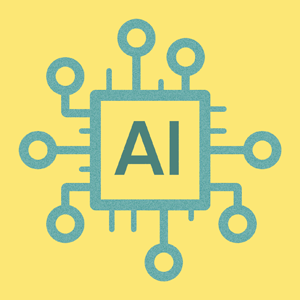 Artificial Intelligence (AI) has been making remarkable strides in recent years, and one of the most fascinating and promising subfields within AI is generative AI. Generative AI is all about creating, well, generating, content that is virtually indistinguishable from that produced by humans. This technology encompasses a broad spectrum of applications, from text and image generation to music composition and even deepfake videos. As the demand for generative AI solutions continues to grow, there is an array of opportunities across the value chain for individuals and businesses to explore. In this blog post, we will delve into the generative AI value chain, examining the various opportunities it offers, including data labeling, model training, and model deployment.
Artificial Intelligence (AI) has been making remarkable strides in recent years, and one of the most fascinating and promising subfields within AI is generative AI. Generative AI is all about creating, well, generating, content that is virtually indistinguishable from that produced by humans. This technology encompasses a broad spectrum of applications, from text and image generation to music composition and even deepfake videos. As the demand for generative AI solutions continues to grow, there is an array of opportunities across the value chain for individuals and businesses to explore. In this blog post, we will delve into the generative AI value chain, examining the various opportunities it offers, including data labeling, model training, and model deployment.
Data Labeling
The foundation of generative AI lies in the quality and quantity of data used to train these models. Data labeling is the process of categorizing and annotating data, making it understandable and useful for machine learning algorithms. Opportunities in data labeling within the generative AI value chain are substantial, as labeled data is the lifeblood of AI models. Here’s how you can get involved:
- Image Annotation: Data labeling for generative AI often includes image annotation, where objects, features, and attributes within images are meticulously tagged and identified. Opportunities exist for individuals and companies to offer image annotation services, assisting in the training of generative models for applications such as autonomous vehicles, medical imaging, and content generation.
- Text Annotation: Text data is essential for training natural language processing (NLP) models. You can venture into data labeling for text, including sentiment analysis, part-of-speech tagging, and entity recognition, catering to the growing demand for AI-driven text generation and analysis.
- Audio Annotation: As generative AI extends into speech synthesis and voice recognition, audio data labeling becomes crucial. Opportunities arise for those capable of transcribing audio data, labeling phonemes, and identifying speakers.
Model Training
The heart of generative AI lies in the training of models. This is where raw data, carefully labeled and curated, is transformed into powerful generative systems. Model training presents various opportunities along the value chain:
- Model Development: The process of creating, fine-tuning, and enhancing generative models is at the core of model training. Companies specializing in the development of generative AI models can find their niche, focusing on specific domains like content generation, art, or creative writing.
- Data Preprocessing: Before training models, data often requires preprocessing, including cleaning, augmentation, and feature engineering. Data preprocessing services can help improve the quality and effectiveness of generative models, opening up opportunities for data scientists and engineers.
- Hardware Acceleration: Generative AI models are resource-intensive and demand high computing power. Individuals and businesses can offer cloud-based GPU/TPU solutions or hardware accelerators to expedite model training, making it more accessible and efficient for others in the field.
Model Deployment
The final stage of the generative AI value chain involves deploying trained models for practical applications. Opportunities here revolve around taking the AI models to market and leveraging them for various use cases:
- Content Generation Platforms: Creating platforms that allow users to easily generate content, such as articles, art, or music, using generative AI can be a lucrative opportunity. Content generation can be tailored to specific industries, like marketing or creative writing.
- Chatbots and Virtual Assistants: Incorporating generative AI models into chatbots and virtual assistants offers opportunities for companies to provide advanced conversational AI services. This can be applied in customer support, healthcare, and various other sectors.
- AI as a Service: Offering generative AI models as a service (AIaaS) can be a profitable venture. This allows other businesses to integrate generative AI capabilities into their products without the complexities of model training and deployment.
Conclusion
The generative AI value chain offers a multitude of opportunities, from data labeling to model training and model deployment. As generative AI technology continues to evolve and find applications in a wide range of industries, individuals and businesses can tap into this growing field to harness its potential. By identifying where your skills and resources align with the generative AI value chain, you can actively participate in this exciting and transformative industry, shaping the future of AI-driven creativity and innovation. Whether you’re an entrepreneur, developer, or data expert, the generative AI value chain holds the promise of a dynamic and prosperous future.
